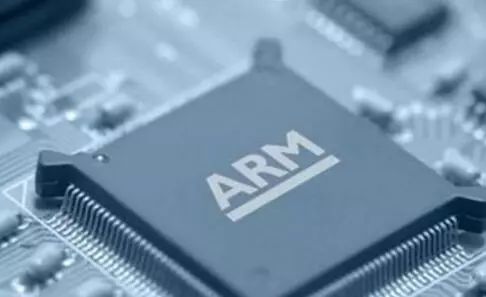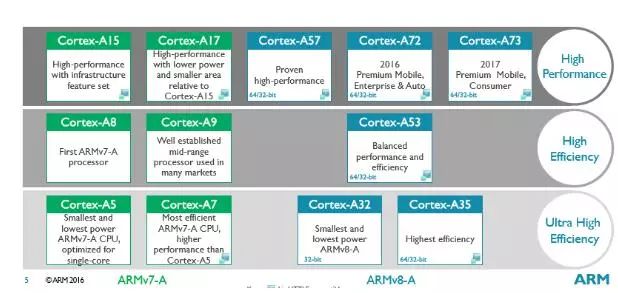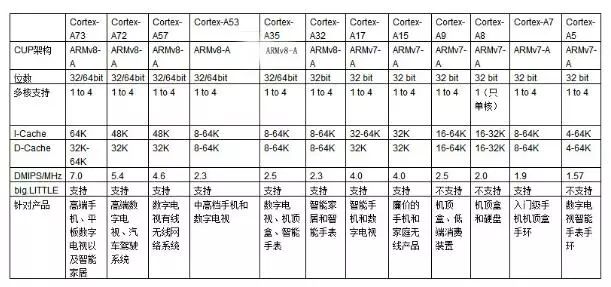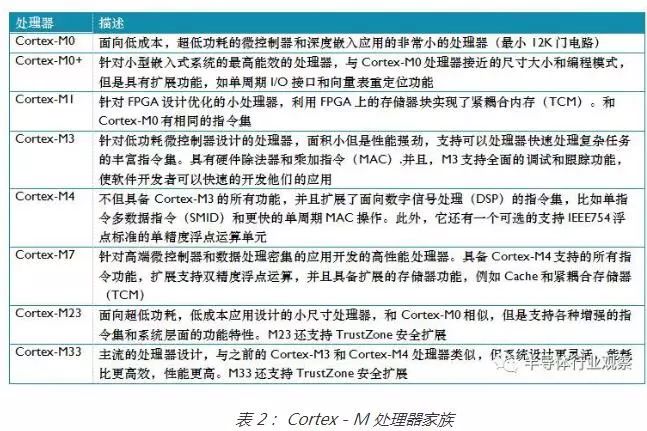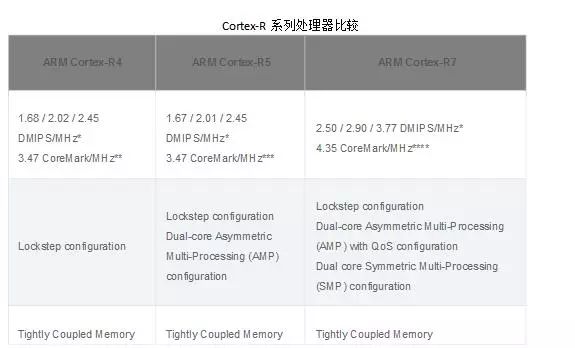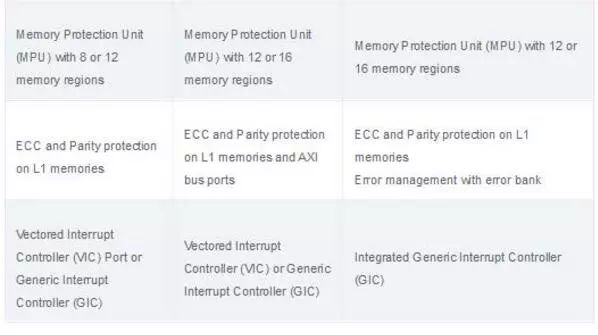How to distinguish ARM Cortex series processors
As we all know, the British ARM company is the leader in the embedded microprocessor world. ARM has always developed its own microprocessor core architecture, and then delegated the intellectual property rights of these architectures to various chip vendors. The streamlined CPU architecture, efficient processing capabilities, and successful business model have allowed ARM to achieve great success. It quickly occupied most of the market share of 32-bit embedded microprocessors. At present, as the requirements for embedded systems become higher and higher, the integrated performance of embedded microprocessors as its core is also increasingly tested. Now, the processing capability of a high-end smart phone can be almost as good as that of a laptop a few years ago. quite. In order to meet the market demand, ARM company is also stepping up and developing their latest ARM architecture, Cortex series is such a product. Then we can take a good look at the summary of knowledge of ARM Cortex processor series today. ARM Cortex series processor ARM's products after the classic processor ARM11 were changed to Cortex naming and divided into A, R, and M categories to serve a variety of markets. Cortex-A: Cutting edge virtual memory-based operating systems and user applications 2, Cortex-R: for real-time systems 3, Cortex-M: Microcontroller ARM Cortex Series Processors - Cortex-A The ARM Cortex-A series is a series of application processors for complex operating systems and user applications. Cortex-A series processors support the ARM, Thumb, and Thumb-2 instruction sets. RM's Cortex-A series processors are suitable for applications with high computing requirements, rich operating systems, and interactive media and graphical experiences. As shown in the figure, the green part is the architecture of v7-A, and the blue one is the v8-A architecture. Basically, green can support 32-bit and 64-bit. Except for A32, it only supports 32 bits. In each part on the right, for example, the top A15-A73 part that requires high performance is the most efficient. Next is the part that focuses on the entire efficiency. The middle part is more efficient. The bottom part is the column. It is the most efficient and the best standard in battery performance. If you want to give them a ranking, from high to low can be roughly sorted: Cortex-A73 processor, Cortex-A72 processor, Cortex-A57 processor, Cortex-A53 processor, Cortex-A35 processor, Cortex - A32 processor, Cortex-A17 processor, Cortex-A15 processor, Cortex-A7 processor, Cortex-A9 processor, Cortex-A8 processor, Cortex-A5 processor. ARM Cortex Series Processors - Cortex-M The Cortex-M processor family is more focused on the lower performance side, but these processors are still very powerful compared to the traditional processors used by many microcontrollers. For example, the Cortex-M4 and Cortex-M7 processors are used in many high-performance microcontroller products with a maximum clock frequency of 400 MHz. Of course, performance is not the only indicator for selecting a processor. In many applications, low power consumption and cost are the key choices. Therefore, the Cortex-M processor family includes a variety of products to meet different needs: Unlike older classic ARM processors (eg, ARM7TDMI, ARM9), the Cortex-M processor has a very different architecture. E.g: - Supports only ARM Thumb instructions and has been extended to support both 16-bit and 32-bit instructions in the Thumb-2 version - Built-in nested vector interrupt control is responsible for interrupt handling, automatic handling of interrupt priority, interrupt masking, interrupt nesting, and system exception handling. - Interrupt handlers can be programmed using the standard C language. The nested interrupt handling mechanism avoids the use of software to determine which interrupts require response processing. At the same time, the interrupt response speed is deterministic and low-latency. - The vector table changes from a jump instruction to the start address of an interrupt and system exception handler. - The register bank and some programming modes have also been changed. These changes mean that many assembly code written for classic ARM processors needs to be modified, and older projects need to be modified and recompiled to migrate to Cortex-M products. ARM Cortex Series Processors - Cortex-R R4: The first embedded real-time processor based on the ARMv7-R architecture. Dedicated to high-capacity deep embedded system-on-chip applications such as hard disk drive controllers, infinite baseband processors, MTK platforms for consumer products, and electronic control units for automotive systems. R5: Introduced in 2010. Based on the ARMv7-R architecture, the Cortex-R4 processor's feature set has been expanded to support higher levels of system performance, improved efficiency and reliability, and enhanced error management in reliable real-time systems. These system-level features include the high-priority low latency peripheral port (LLPP), which is used for fast peripheral reads and writes, and the accelerator coherency port (ACP), which was later used to increase efficiency and achieve more reliable high speeds with external data sources. Cache consistency. Based on the 40 nm G process, the Cortex-R5 processor can operate at nearly 1 GHz, which provides 1,500 Dhrystone MIPS performance. The processor provides a highly flexible and efficient dual-cycle local memory interface, enabling SoC designers to minimize system cost and power consumption. R7: The Cortex-R7 processor is the highest performing Cortex-R series processor. It is the standard for high performance real-time SoCs. The Cortex-R7 processor is designed for the implementation of an advanced chip process based on 65 nm to 28 nm, and its design focuses on improving energy efficiency, real-time responsiveness, advanced features, and simplified system design. Based on the 40 nm G process, the Cortex-R7 processor can operate at frequencies exceeding 1 GHz, which provides 2700 Dhrystone MIPS performance. The processor provides a flexible local memory system that supports tightly coupled memory (TCM) local shared memory and peripheral ports, enabling SoC designers to achieve high standards of hard real-time requirements within constrained chip resources.
Welding diodes are available for medium frequency (over 2KHz) and high frequency (over 10khz) applications.They have very low on - state voltage and thermal resistance. Welding diodes are designed for medium and high frequency welding equipment and optimized for high current rectifiers. The on-state voltage is very low and the output current is high.
Welding Diode,Disc Welding Diode,3000 Amp Welding Diode,High Current Rectifier Welding Diode YANGZHOU POSITIONING TECH CO., LTD. , https://www.cnpositioning.com